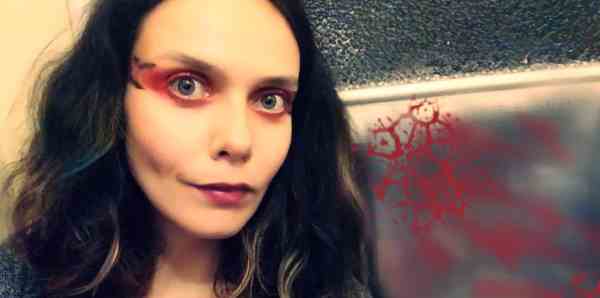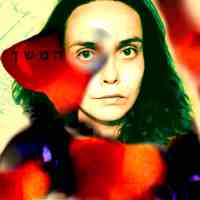

Maria Ka
Yuri Slezkine states the following in his introduction to The Jewish Century (2004, Princeton University Press):
“Modernization is about everyone becoming urban, mobile, literate, articulate, intellectually intricate, physically fastidious, and occupationally flexible. It is about learning how to cultivate people and symbols, not fields or herds…It is about transforming peasants and princes into merchants and priests, replacing inherited privilege with acquired prestige, and dismantling social estates for the benefit of individuals, nuclear families, and book-reading tribes (nations). Modernization, in other words, is about everyone becoming Jewish.” Indeed, when my father’s grandmother Gertrude came to the United States, she had to stand firm as the family re-invented itself. Gertrude was relatively well-to-do in Poland – her family owned and operated theaters -- but in America she arrived with a single steamer trunk of belongings. She became a peasant for awhile as everyone found their feet. Gertrude certainly stood tall, much taller than my great-grandfather Louis, who as family lore recounts walked several steps behind his wife to try to cover the discrepancy. The old world was swallowed up by the new world, but the sores remained: even when I was a child, Gertrude would tell me of hiding from the pogroms seeking to kill Jews as they swept through her town. All that was in contrast to the better life that she sought in America.
I am telling you all this, because Maria Ka makes it abundantly clear that the personal is political. Ka (the singer’s full last name is Kawska) lives in Poland, and she discovered that her family had covered over its Jewish roots; there were Jews in her father’s genealogy. This revelation led Ka to pursue Jewish studies and psychology at University in Krakow. It also led to further realizations: that the Yiddish language deeply resonated with Ka, and that her University program did not provide much by way of women’s studies. This culminated in Ka’s thesis on Jewish women in Polish interwar cinema. A consistent theme in Ka’s work is restoring the centrality of women’s voices, as women have been marginalized in both society and by patriarchal religions. By the time that Maria Ka recorded these songs, women were in the streets protesting the Polish court decision that sought a ban on abortions. For a scholar-activist such as Ka, the stakes were clearly high.
Ka’s interests permeate Der Hemshekh, and she sings entirely in Yiddish. The soundworld of the album is resolutely contemporary, primarily built around electronics and loops, oboe, drums, and Maria Ka’s vocals. “Gikhe Trit (Fast Steps)” kicks off the album with some cold electro-new wave, and the song establishes an urgent tone. The song celebrates the regenerative power of Mother Earth, against which Ka declares that “it’s high time for your greed, black piousness to disappear.” More than that, the song points towards abandoning social structures that have kept women from achieving full equality in public life.
“Ale Teg (Every Day)” continues the collision between modernism and Yiddish futurism by laying down a seriously fuzzy bass line for Maria Ka’s call to live authentically: “Every day I go another way/I create myself from the beginning.” The declaration arrives with liberatory swagger. Given Maria Ka’s feminism, it is not surprising to find songs that ‘flip the script’ in order to illuminate a woman’s perspective. Ka and her band perform “Di Mizinke,” a traditional song that is sung by a father to G-d upon marrying off his daughter. The tune speeds up as if it were a traditional klezmer romp, but it also sounds like hard cabaret. With the song re-focused on the daughter, rather than the father, the bride refuses to give her father a kiss by the end of the song.
Another track that offers subversion through the female gaze is ”Sheyn Vi Di Levone (Pretty Like The Moon),” a tender song usually sung by a man but here is enlightened by a woman taking the lead. The stunning, trance-inducing “Sha Shtil! (Shhh Quiet!)” takes a song that would ordinarily celebrate a rabbi and the pupils who follow him in the male study of Torah, and turns it into a celebration where we are encouraged to be “quiet, the woman is doing a dance for us/stamp feet when she sings.” It is women that we are to learn from, and women who are powerful when returned to the center of public life: “And when the Woman sings the holiest melody/Satan loses his wings – becomes a dead body.” Ka also takes a well-known Yiddish song, “Papirosn (Cigarettes),” which features a young boy attempting to sell cigarettes in the rain; here, a young girl is asking passersby to purchase her cigarettes. With its tango rhythm, the song highlights the intertwining of misery and poverty. Casting off the social shackles that constrain women is addressed several times. In “Oyfn Veg Shteyt A Boym (By The Wayside…),” the issue is the overprotective mother. The young daughter is likened to a bird about to fly away; but the mother stifles the daughter with her own worries, making it hard for the young woman to become an adult. “Ikh Bin Mid (I Am Tired)” can barely contain its outrage and the song is born along by what sounds like ‘industrial’ jazz. “I am tired/I’m to fury wired,/Want to beat all the walls/With my burning hands’ pall!” – Both these songs speak to the invisibility of women in public life, but again, can be easily seen to reflect the social context faced by women in Poland around their bodily autonomy and individuality.
Of course, there can’t be a revolution if you can’t dance to it. The contrast between the electric sounds and acoustic instruments is often jarring and sexy, as when Maria Ka celebrates the Zodiac sign of Scorpio. And the album closes with an absolute goddamned banger, “Ven Ikh Kuk Oyf (When I Look At)” that brings Yiddish culture storming onto the dancefloor. It’s a thunderous dance tune that celebrates identity and remaining true to one’s culture. “I am more from the distant fields,” sings Ka, squaring the circle between that which the modern world left behind, but then embraces. Maria Ka’s work is profoundly moving: this is avant-garde music by choice of language and daring musical settings. Yet, the album is also strangely accessible. It feels like outsider music moving towards center stage -- demanding it – and insisting on being accepted on its own terms without compromising an empowering political and feminist worldview. The fiercely independent and eccentric matriarchs of my family and yours are enfolded within this brilliant, starry, original work. Maria Ka’s work is also profound punk music, a resistant force arriving with a call to action. Der Hemshekh signals a paradigm shift for contemporary Yiddish music, highlighting that the language has much to offer our navigation of the modern world. – Lee Blackstone
Search RootsWorld
|

 I thought a lot about my great-grandmother, and my grandmothers, and my mother while listening to Maria Ka’s astonishing album Der Hemshekh (‘The Continuation’). My family can only trace certain ancestors; the rest either drifted away, or were killed, in Europe. Traditions persist, but the two sets of dishes to keep kosher no longer do, and only certain Yiddish words are regularly used. There’s a tie to history, but also a hollowness derived from all that’s missing and all that’s beyond one’s control.
I thought a lot about my great-grandmother, and my grandmothers, and my mother while listening to Maria Ka’s astonishing album Der Hemshekh (‘The Continuation’). My family can only trace certain ancestors; the rest either drifted away, or were killed, in Europe. Traditions persist, but the two sets of dishes to keep kosher no longer do, and only certain Yiddish words are regularly used. There’s a tie to history, but also a hollowness derived from all that’s missing and all that’s beyond one’s control.